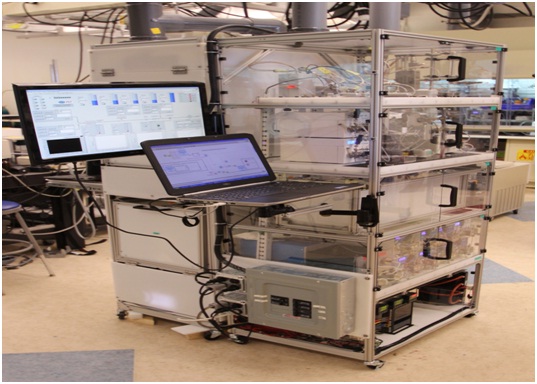Traditional way of drug making has extensively outdated. While many manufacturers have adapted efficient methods in manufacturing, but still a sizeable pharmaceutical companies work on an outmoded approach that is highly lethargic, inflexible, and prone to frequent breakdowns.
A new invention of refrigerator-sized apparatus that can intake a set of ingredients and quickly able to produce four common pharmaceutical drugs happens to be the most advanced demonstration yet to be tapped and a new strategy for drug making that is more durable, efficient, and reliable. Portable drug-making technology would likely work for a more efficient way to respond to local drug shortages or emergency situations such as a disease outbreak.
Discovering drugs can lasts from months to a year because the current method requires performing multiple chemical steps, often involves several different manufacturing facilities. A single unanticipated plant shutdown can cause substantial loss.
The new self-contained unit, developed by a team of researchers from Massachusetts Institute of Technology (MIT), automates the process by necessary chemical reactions, separating and purifying intermediate products and passing them down the line. It can dispense vast liquid doses of generic Benadryl, Valium, Prozac, or lidocaine, a common local anesthetic.
This unit is the most compact continuous-flow system yet demonstrated, and the first of its kind that can produce multiple drugs. The four drugs trialed were chosen by the project’s sponsor, the U.S. Defense Department, in its part to demonstrate the breadth of the new system’s capabilities, since the drugs are chemically distinct from each other and require different synthesis routes. They are also predominantly found in a medic’s pack.
In 2012, the same team developed a continuous system, built into a shipping-container-sized unit, which manufactured a high-blood-pressure drug in the form of pills. It’s a part of the project that was fully funded by Novartis as part of a 10-year deal, $65 million a collaboration between MIT and the Swiss pharmaceutical major to develop continuous-flow manufacturing technologies.
Though the U.S. Food and Drug Administration has been advocating for better ways to make drugs since a decade, continuous-flow manufacturing technology is still relatively in its early stage of development. It won’t replace batch processing anytime soon. But in the future it could be used at a small scale to speed up aspects of batch processing. And systems like the one the MIT researchers demonstrated could be used to provide urgently needed drugs on the battlefield, in disaster areas, or during an outbreak.









